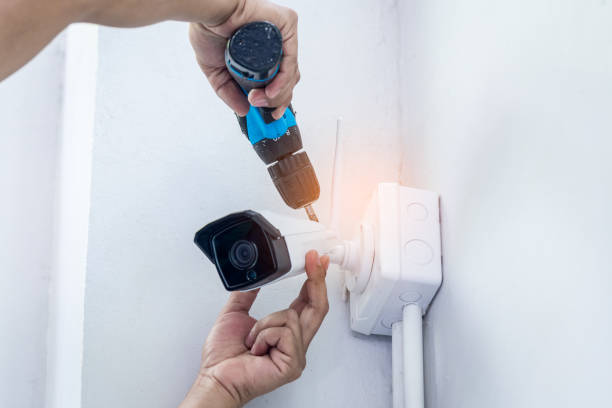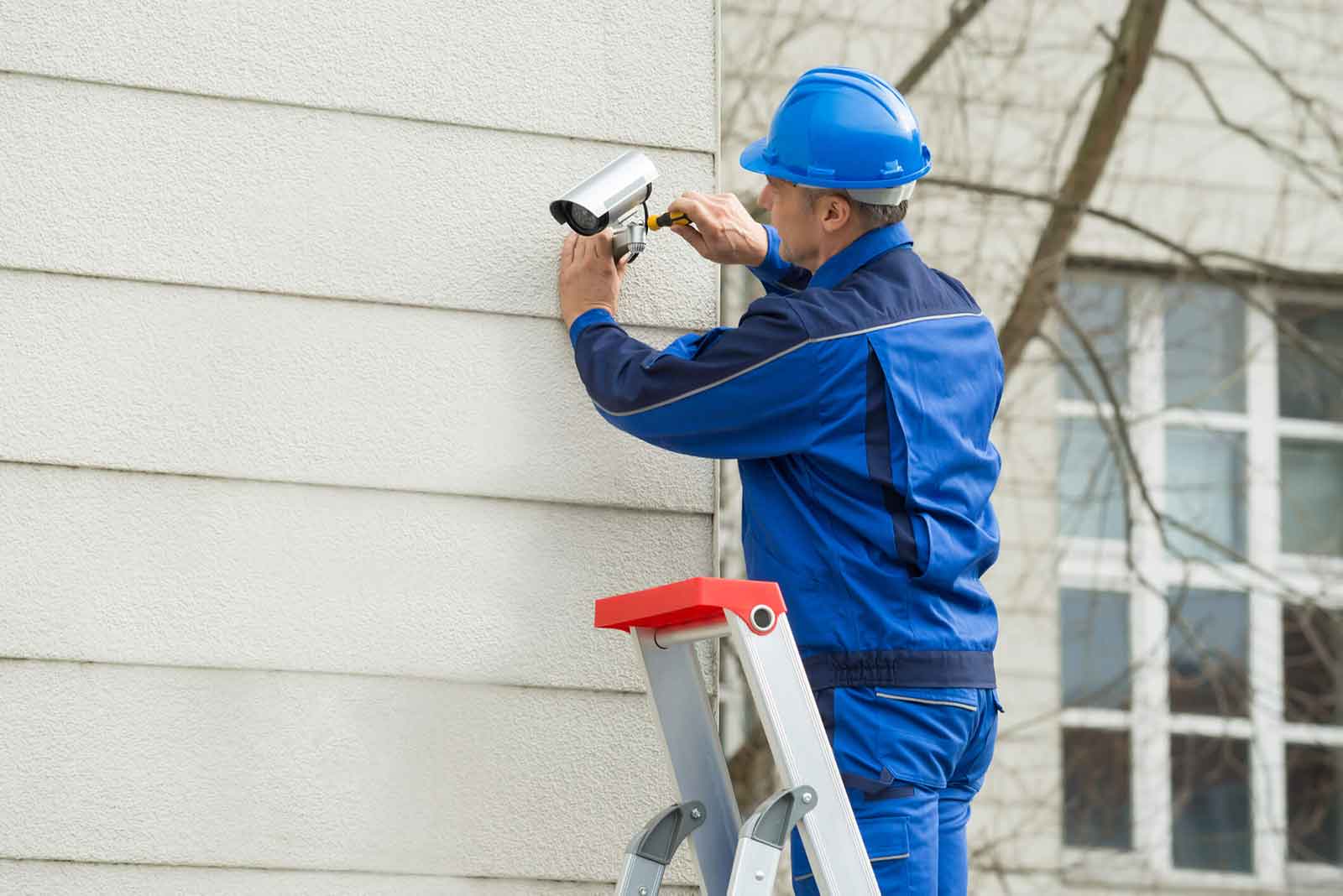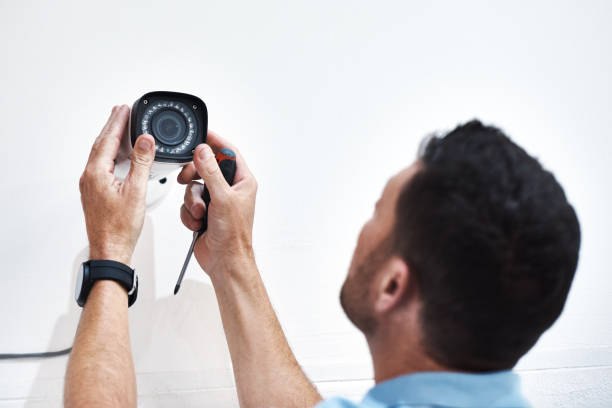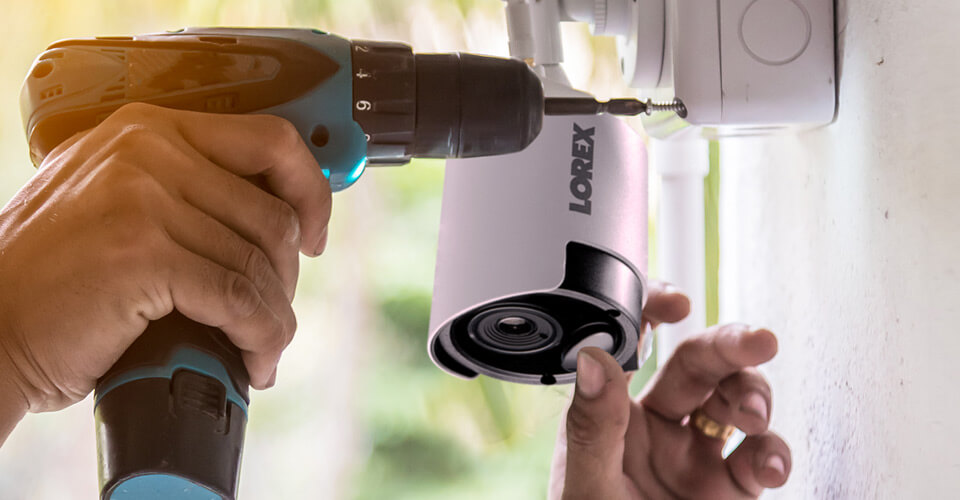To Install security cameras may seem like a difficult task for people who don’t know how to do it on their own. Don’t be concerned! That was how we felt at first, too. We’re not only experts now, but we also do these hands-on projects all the time.
In fact, most smart home security cameras now allow for DIY installation like Install security cameras, which means we can put them up ourselves rather than engage a specialist. Install security cameras varies in difficulty depending on where we want to put the camera and its power supply (plug-in or battery).
Of course, the Install security cameras method varies by brand and model, but we’ve learned a thing or two about installation from examining hundreds of home security cameras. While each camera comes with its own set of instructions, we’ve compiled a list of recommended practices to Install security cameras in home.
Continue reading to find out what they are!
How To Install Security Cameras on Your Home
The initial step in installation is to choose a location for our security cameras. Before making any purchases, we should decide where the camera (s) will be positioned. This allows us to figure out how many cameras are needed to cover the entire house, how long an extension wire is needed, and whether or not batteries are required. We published a full article about where to Install security cameras in our houses previously.
Install security cameras With Hubs
- When using cameras that require a hub, keep the camera at a safe distance from the hub to ensure seamless Wi-Fi or other kinds of communication.
- To connect using the Blink Home app, the Blink XT2 must be within 100 feet of the Sync Modules, for example.
- If your camera doesn’t come with a hub, make sure it’s close enough to your network or range extender to establish a good internet connection. If everything else fails, invest in a Wi-Fi range extender.
Installing Indoor Security Cameras
Indoor security cameras should be installed on the first floor of your home. If you have many stories, consider installing cameras in common areas such as the main hallway or living room. In such scenarios, you are more likely to catch offenders’ faces, making it simpler to bring them to justice.
- Install a camera outside the main bedroom, as this is where the majority of valuables are kept.
- Make sure the camera isn’t easy for an intruder or even a naughty teen to break or turn off.
- This is especially critical for cameras that save their footage on an internal memory card.
- Basically, every location where a thief may get entry through doors or windows should be secured.
- Place cameras in corners for the greatest potential field of vision. Install cameras in the stairwells to keep track of intruders within your home.

However, we do not advocate installing security cameras in bedrooms or bathrooms because this might damage privacy significantly. Remember that most interior cameras don’t operate through glass because heat-based motion detection is blocked. If you want to keep an eye on the exterior of your home, there are many weather-resistant outdoor cameras to choose from, which leads us to our next point.
Placing Outdoor Security Cameras

Outdoor cameras should be installed at most, if not all, of your home’s access and exit points. Your front and rear doors, at the absolute minimum, should be covered. Burglars are more likely to enter through side or rear windows than through the front of the property, so install outside cameras in off-street windows:
- Avoid recording any property other than your own to safeguard your neighbours’ privacy.
- While it’s good to keep an eye on your neighbours, secretly filming their day-to-day activities puts the “nosy” in nosy neighbours.
- This is also unlawful and infringes on their individual rights under the Fourth Amendment.
- Installing an outdoor camera, especially one that plugs into a power socket, is generally more difficult than installing an indoor camera.
- It’s possible that you’ll need to use an outdoor plug or snake it inside your home in some way.
Another option is to hardwire the camera into your home:
Wireless cameras, whether they’re wireless interior or wireless exterior cameras, are usually simple to install and operate. Of course, if you use batteries, keep track of how long they usually last and when they need to be changed.
Nonetheless, with a battery-powered camera, your camera will stay on during power outages. Indoor cameras, regardless of the circumstances, need careful consideration of placement alternatives before purchasing. Many people ask if security cameras discourage crime or are a waste of money.
In a University of North Carolina research study, over 400 convicted burglars were questioned, and they were asked what would prevent them from targeting residences. One of the most common and widely accepted comments was that if the robbers spotted cameras on the property, they would reconsider stealing it. This is why some experts advise installing both a visible camera and a concealed gadget.
Here are a few more things we keep in mind while setting up outside cameras:
Direct sunlight should be avoided.
While we prefer indirect light for our outdoor cameras, keep in mind that direct or bright light produces glare and colour distortion. To avoid this, check the light levels in the places where you intend to put your cameras at different times of the day before installing them. Take note of any direct light sources in your film, such as the sun, lampposts, or anything else that might generate glare. Make sure your camera isn’t in direct sunlight by moving it where it was supposed to be.
Make allowances for blind areas.
Blind spots in your security system, like blind spots in your car, cause you to overlook vital information. In an ideal world, we’d all have security cameras with extremely broad fields of view and the ability to see far away. You should think about the field of view of each camera and do the math to make sure that all of the areas around your home are covered and there are no obstructions to the lines of sight before you put outside cameras.
Consider detachable structures.
We frequently overlook taking film of distinct or adjacent structures to our homes, such as garages, greenhouses, or outbuildings. Cameras should be placed in and around these structures. When it comes to security cameras, there are a few things to keep in mind.
Have you figured out where you’ll put your camera?
- It’s now time to install everything together. We would like to install our home security camera installation in stages.
- Because every camera is different, it’s crucial to follow the manufacturer’s recommendations. However, the steps below can help you remain on the correct track:
- Plan out and draw where you will position the cameras inside and outside your home once you’ve bought and acquired new security cameras.
- Take your cameras to the position you want them, loosely or temporarily install them with a little nail or tape, switch them on, and test them momentarily.
- If the cameras function, proceed to permanently attach them according to your original diagram.
- Even if they don’t work, you won’t have wasted time installing things that you’ll have to delete right away.
- You can watch live video from the security camera after you set it up. You can use a smartphone app or a computer to do this.
- Make adjustments to your settings, such as motion sensitivity and brightness.
- Verify that everything is in working order.
The sections below go through how to install various types of security cameras in greater depth.

Wireless Security Camera Installation
You may either Install security cameras or just set it down on a level surface. Mount the camera using drilling (most cameras come with the appropriate mounts). Connect the camera to the internet through Wi-Fi. Sync it with any other connected devices, such as smart sensors or video doorbells, that it supports. If you want to do it yourself, most apps now have step-by-step instructions that you can follow. We recommend following them to the letter.
Install Security Cameras that are Hardwired
While Install security cameras provide fewer installation possibilities, the connections are more secure. Wired cameras, on the other hand, are a little more difficult to set up. It should be hardwired into your home. Drill holes, connect each camera with wires, and then Install security cameras. When mounting a camera on a wall or ceiling, ensure that the location is secure, which may require the use of drywall screws or finding a stud.
To avoid causing any electrical concerns, always check for any existing wire before digging.
- Make a mark and drill a hole for the wires.
- Carry out the wiring.
- Install the camera.
- You could also be able to connect the camera and attach it.
- Some DVRs are included with some cameras and may be connected by an Ethernet cable or power adapter.

